

An architecture diagram is a chart or graphic used to visualize the architecture of software, systems, applications, networks, etc. It graphically displays the components of the architecture and the relationships between them, providing an intuitive and comprehensive view of the system. It can help different roles (such as developers, operation and maintenance personnel, product managers , etc.) understand and analyze the system from different perspectives (such as business , technology , function, data, etc.).
This article will explain in detail the types of architecture diagrams and how to use ProcessOn to draw a clear architecture diagram.
In the Internet industry, architecture diagrams are an important tool for visualizing the architecture of software, systems, applications, etc. and the relationships between their components. Commonly used architecture diagrams include :
1. Technical architecture diagram
Focus: The technical architecture diagram focuses on the technology stack, technical components used by the system, and how they are integrated.
Role: Provide the technical team with an overview of the system's technical implementation, helping team members understand the system's technical architecture and technology selection.
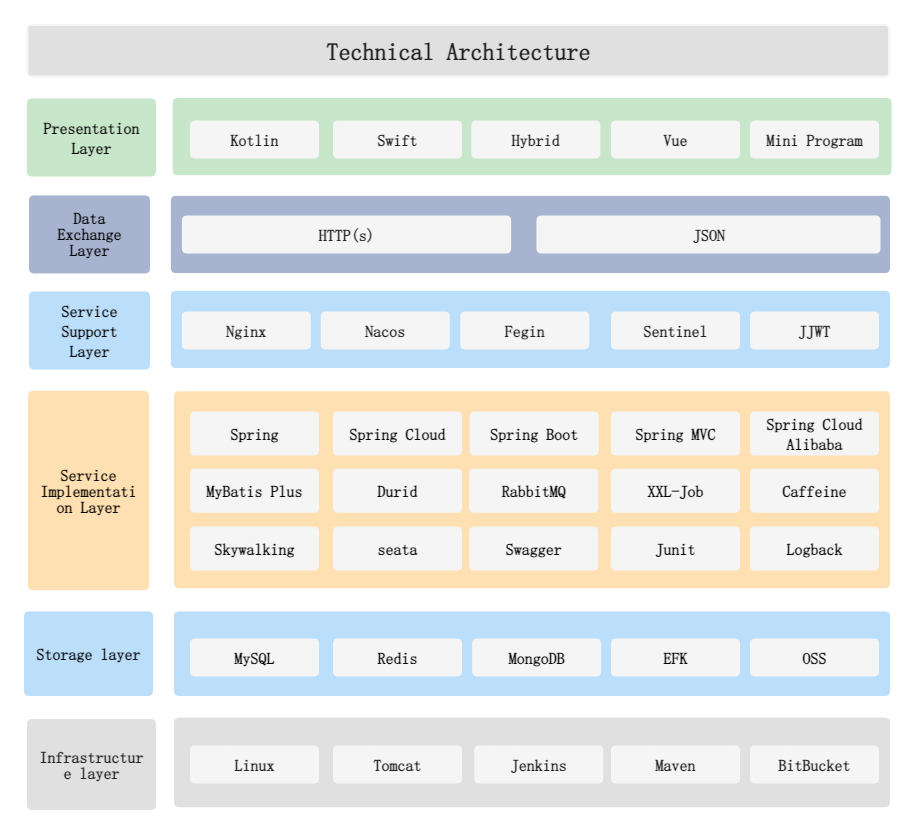
Technical architecture diagram
2. Deployment architecture diagram
Focus: The deployment architecture diagram focuses on how the system is deployed to the physical machine and network environment, including the configuration and layout of resources such as hardware, software, and network devices.
Function: Provide system deployment solutions for system administrators and operation and maintenance personnel to help them understand the physical layout and deployment requirements of the system.
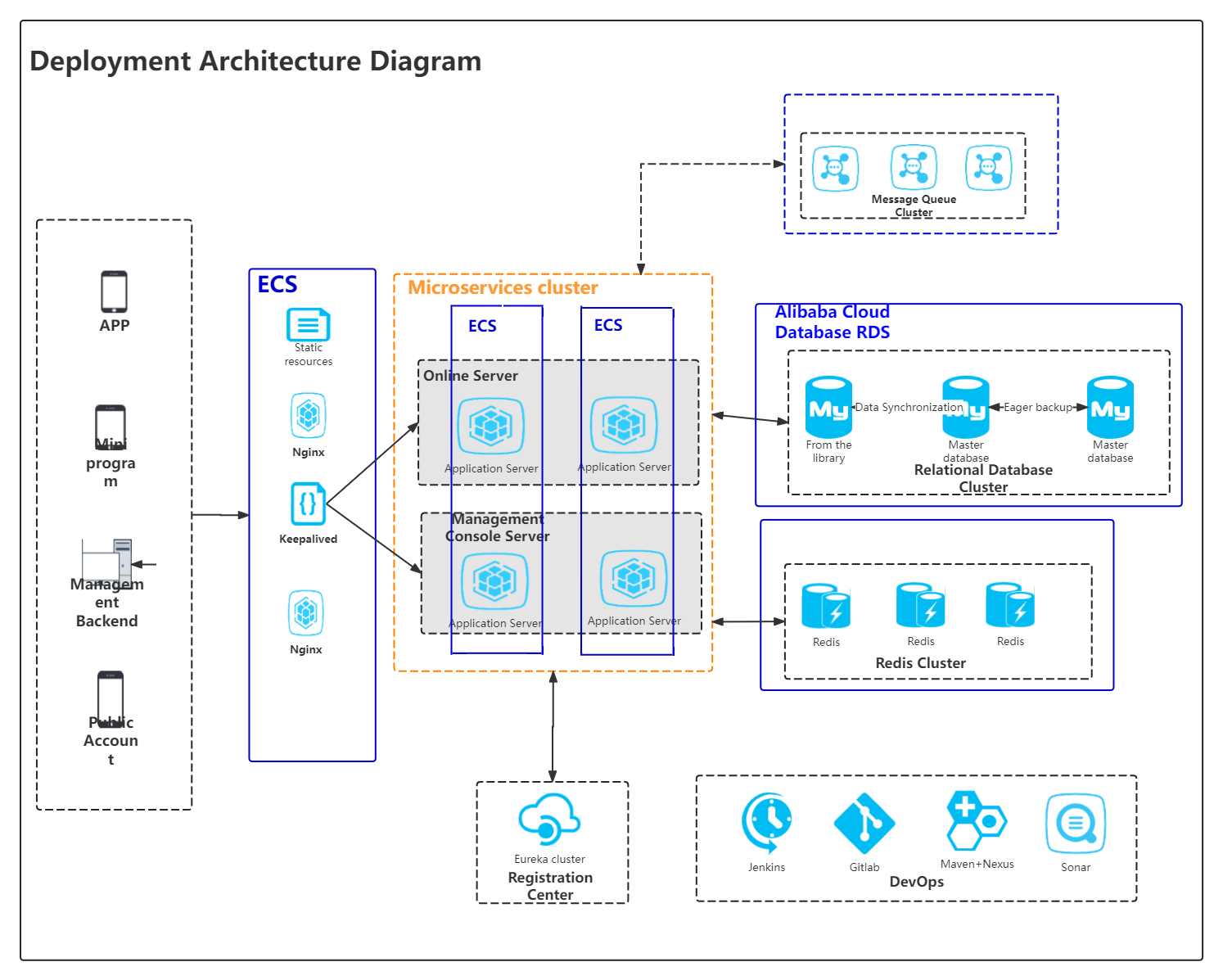
Deployment architecture diagram
3. Data architecture diagram
Focus: The data architecture diagram focuses on the storage solution of data in the system, including data model, data storage format, data transmission, data replication, data synchronization and other strategies.
Function: Provides guidance on data management and data processing to database administrators and developers, helping them understand the system's data structure and data flow.
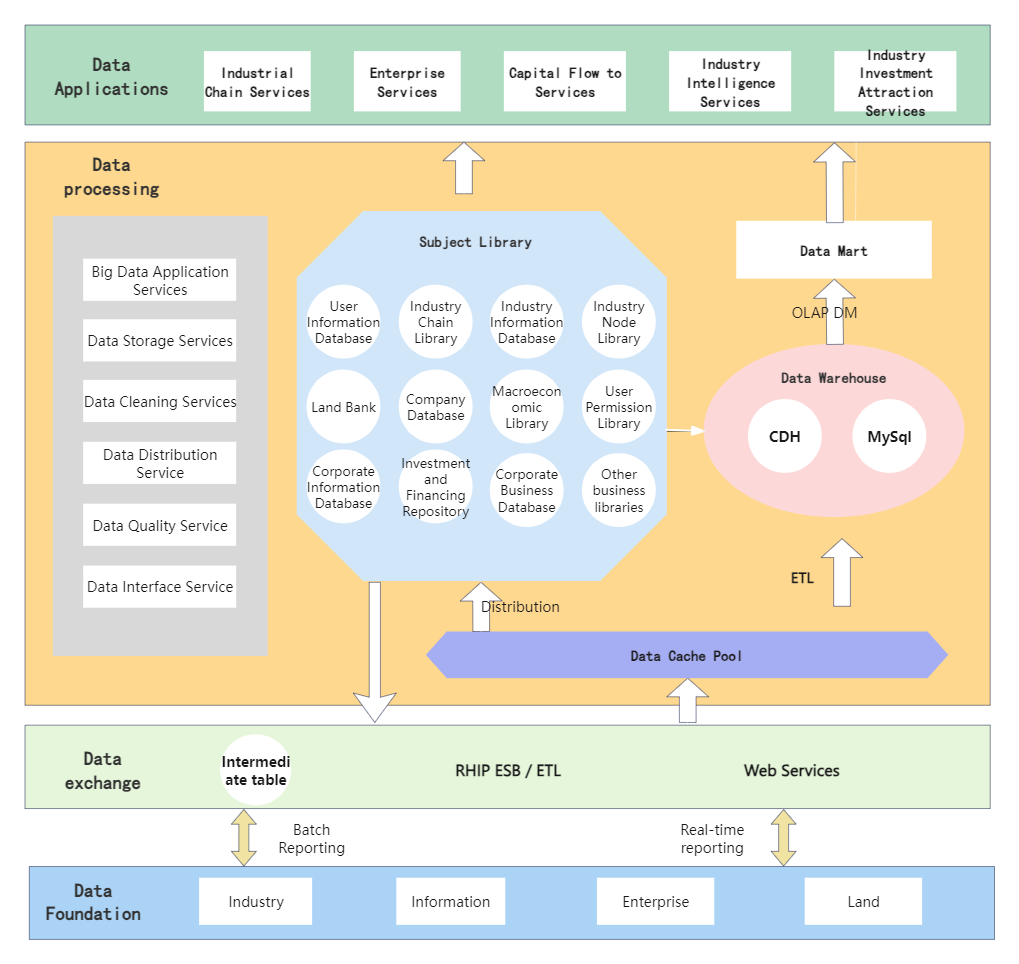
4. Business architecture diagram
Focus: The business architecture diagram focuses on the organization's business goals, processes and strategies. It describes the organization's business model, value chain, business processes and business rules.
Role: Helps business analysts, product managers, and senior executives understand how the organization's business operates and provide support for business decisions.

5. Product architecture diagram
Focus: The product architecture diagram is attached to the main business, and the business determines the product functions and direction. It is the design and planning of the main product, which can include the product content that has been realized and is being planned.
Function: Help product teams review the positioning and direction of their own products, identify problems and make adjustments in a timely manner, and better carry out product design and planning.
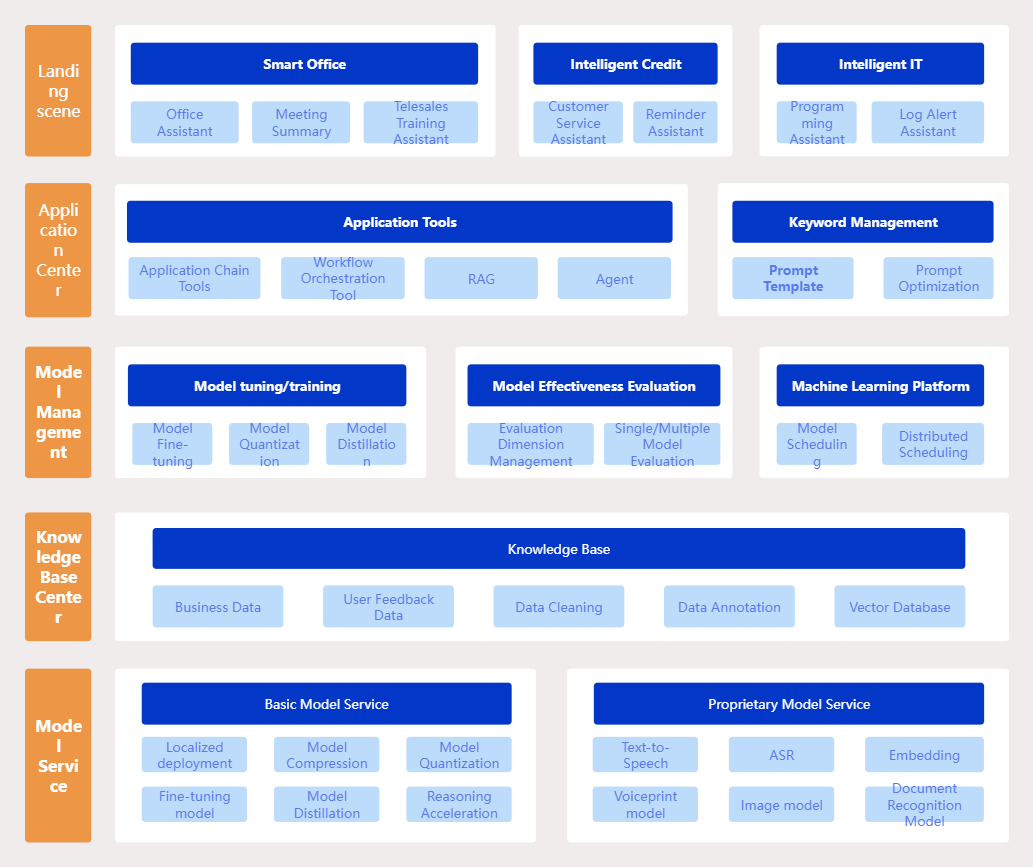
Large model product architecture diagram
6. Application architecture diagram
Focus: The application architecture diagram plays a connecting role among the eight architecture diagrams. It undertakes the implementation of business models and product functions , and also guides the design and development of technical modules.
Function: Help developers and architects understand the overall structure of the application system and the integration of various technical components.
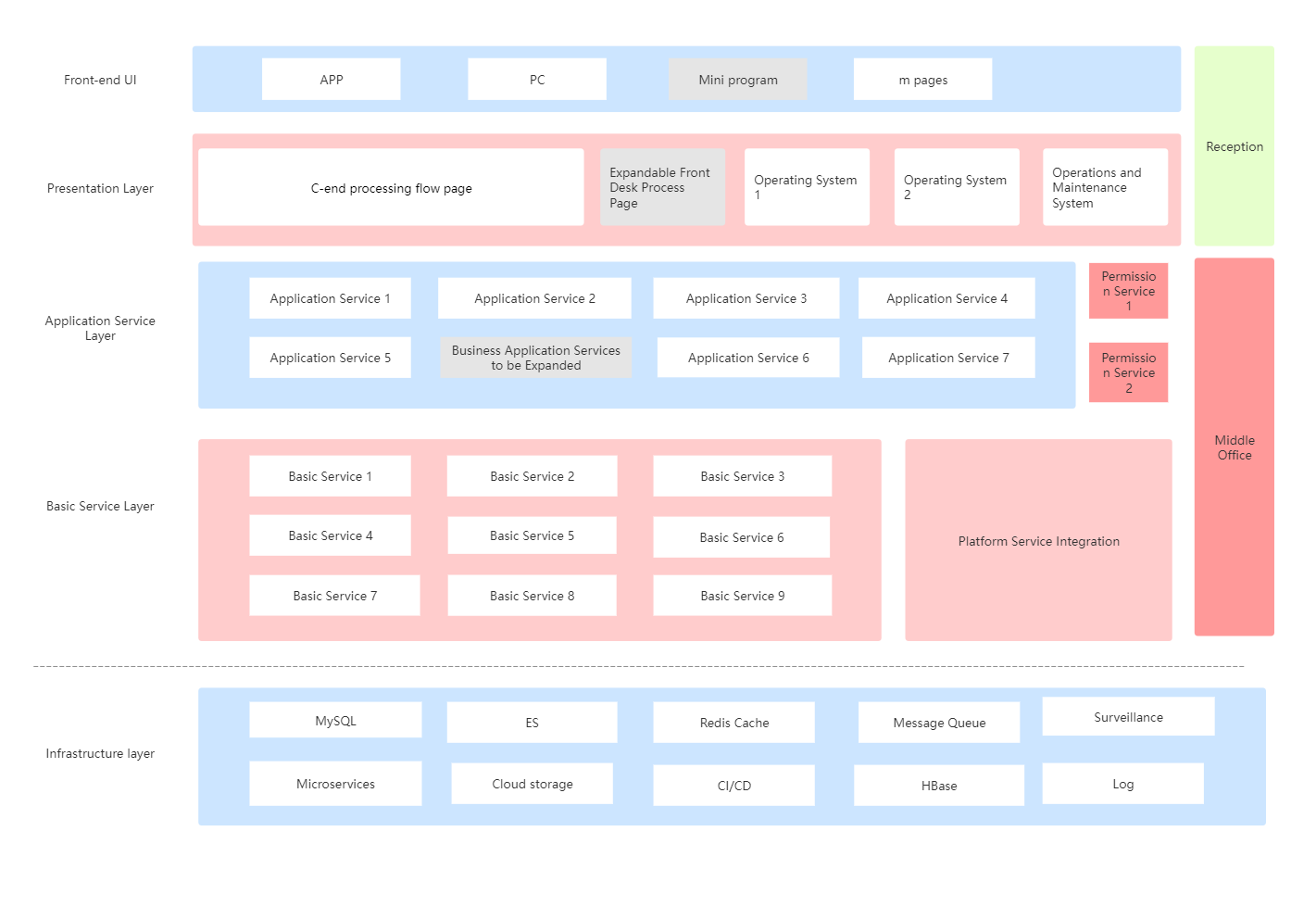
Application architecture diagram
When drawing an architecture diagram, you should consider multiple aspects to ensure that the architecture diagram can accurately and clearly express the overall structure of the system and the relationship between various components. Here are some things to pay attention to :
1. Clearly define your goals:
Determine the primary purpose of the architecture diagram, such as communication, design review, development guidance, or operations management.
Choose the appropriate architecture diagram type according to your goals, such as technical architecture diagram, deployment architecture diagram, data architecture diagram, etc.
2. System Analysis:
Conduct a comprehensive analysis of the system to understand the system's functionality, performance, reliability, scalability and other requirements.
Identify key components, interfaces, data flow, control flow, etc. in the system.
3. Abstraction level:
Determine the abstraction level of the architecture diagram, such as system level, application level, module level, etc.
Display different aspects of the system at different levels of abstraction, such as overall structure, module division, component relationships, etc.
4. User perspective:
Consider the needs and concerns of target users (such as product managers, developers, operations personnel, etc.).
Make sure the architecture diagram can intuitively convey the information users need.
5. Standardization and consistency:
Use standardized symbols and notations to ensure consistency and readability of architecture diagrams.
Maintain consistency in style, layout, and terminology across different architecture diagrams.
6. Scalability:
When designing an architecture diagram, the scalability of the system and possible future changes should be considered.
Reserve space or use scalable graphic elements to accommodate future changes in requirements.
7. Follow standards:
Follow industry-recognized standards and specifications to draw architecture diagrams, such as UML (Unified Modeling Language), etc. This can improve the readability and maintainability of the architecture diagram .
As a professional online drawing tool , ProcessOn supports the drawing of various professional graphics such as architecture diagrams, flow charts, UML diagrams, etc. The following will explain how to use ProcessOn to draw an architecture diagram.
First, go to the ProcessOn personal file page and click New - Flowchart in the upper left corner.
If the drawn architecture diagram has a system hierarchy, drag the container element in the UML use case diagram to the canvas to divide the modules, name the modules, such as system layer, application layer, etc., and then drag the components of each module into the container. When the container is moved, the elements in the container will also move with it.
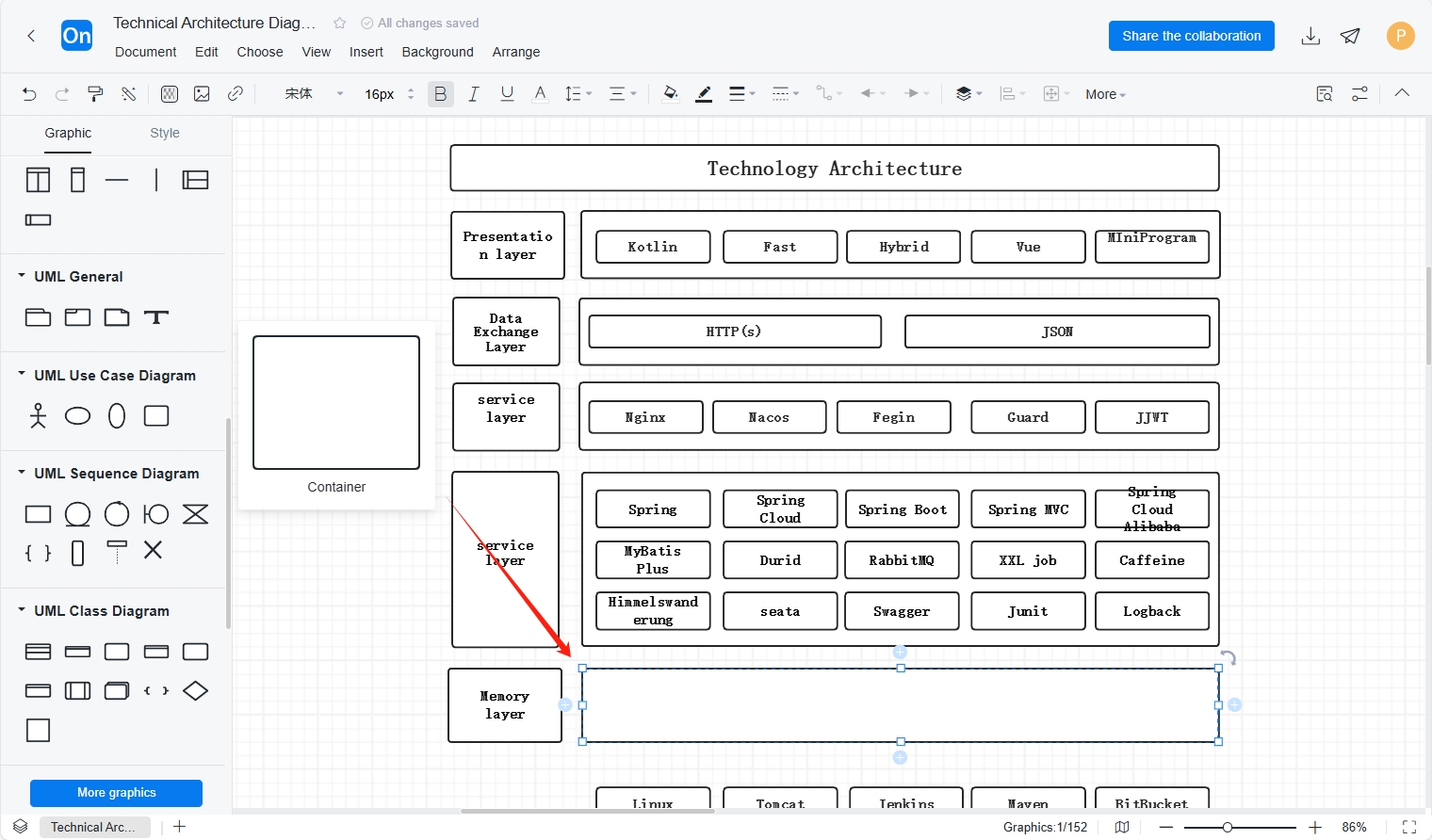
Next, layout the positions of the components. You can use the distribution alignment function to quickly adjust the positions of the components. For horizontal graphic alignment, select top alignment (Alt+T), vertical center alignment (Alt+M), or bottom alignment (Alt+B). For vertical graphic alignment, select left alignment (Alt+L), center alignment (Alt+C), or right alignment (Alt+R).
After adjusting the alignment, continue to adjust the distribution method. There are two distribution methods. For the horizontal graphic distribution structure, select horizontal average distribution (Alt+H). For the vertical graphic distribution structure, select vertical average distribution (Alt+V).
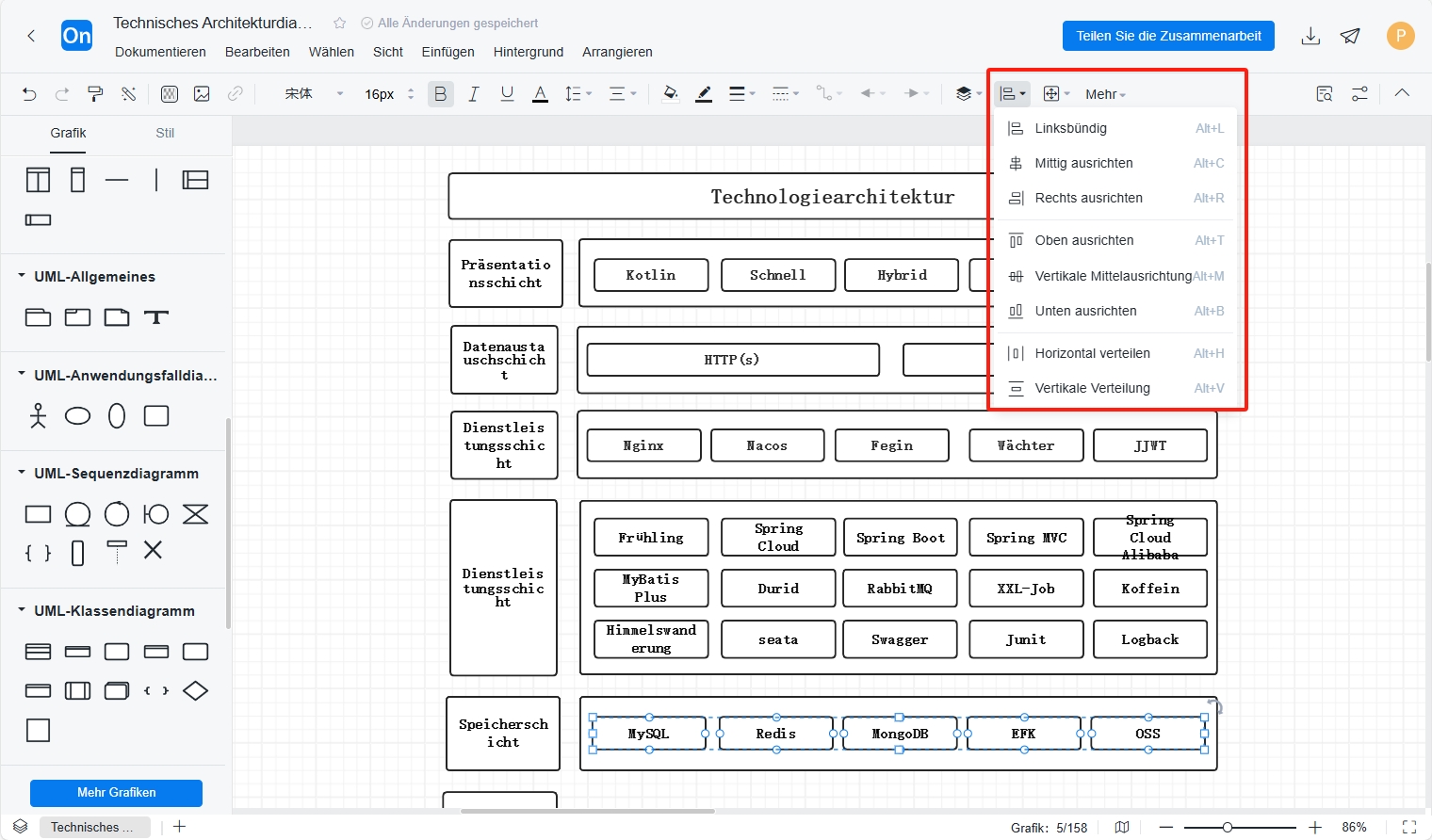
After setting up the framework of the architecture diagram, unify the colors of each module to better display the overall structure and the relationship between modules.
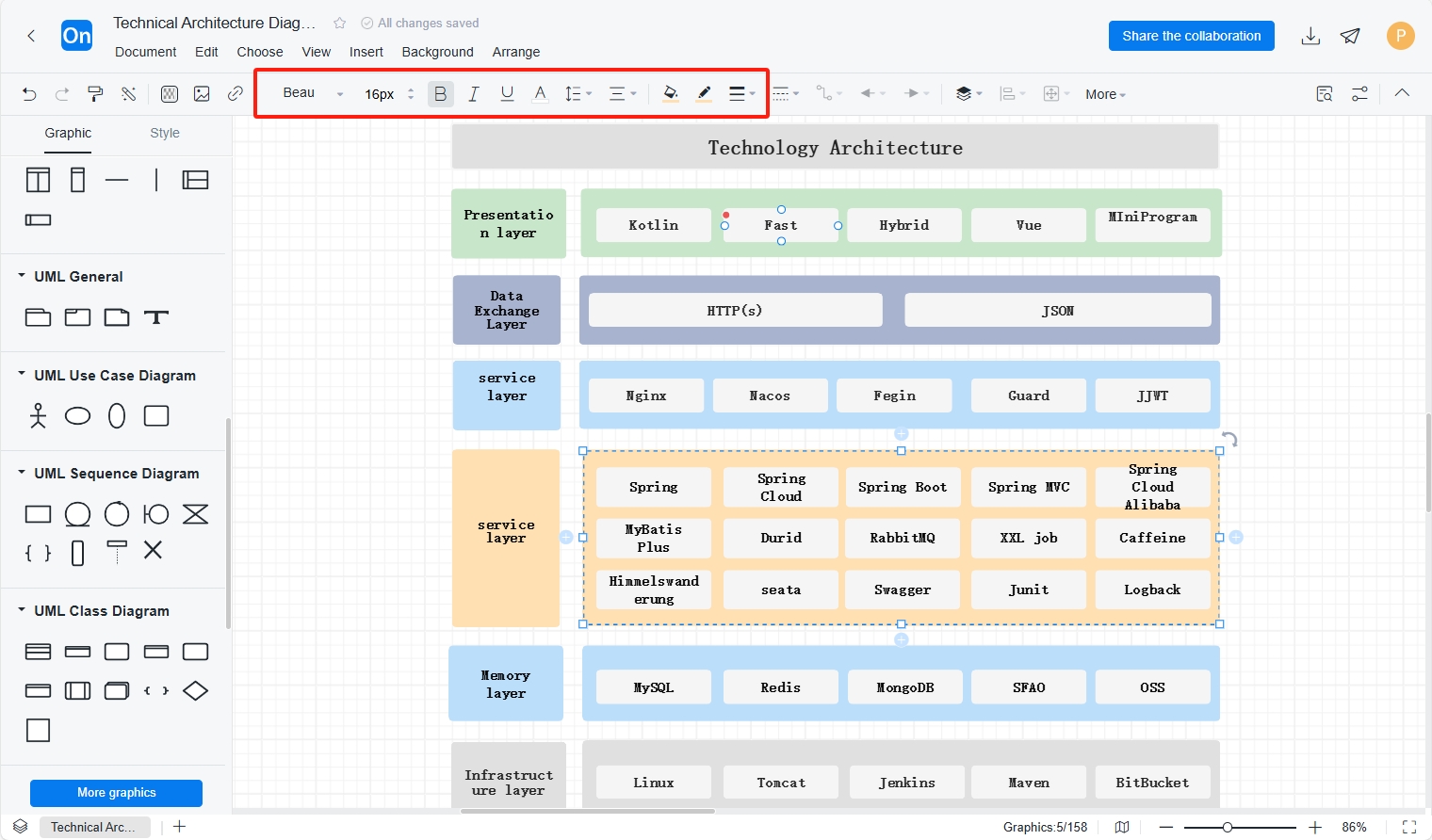
The technical architecture diagram plays a vital role in software and system design. It describes in detail the technical components required by the system, the interaction between the components, and the technical implementation scheme. It not only helps decision-making in the system design and development process, but also serves as an important support tool for system operation and maintenance management to ensure the stability and scalability of the system. I believe that after reading the above article, you have a fairly in-depth understanding of the architecture diagram. You can go to the ProcessOn template community to view more architecture diagram templates, or try to draw an architecture diagram yourself.